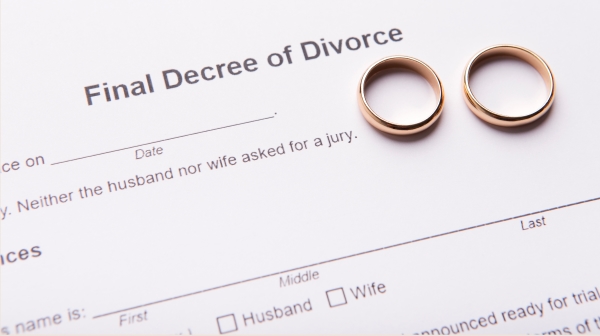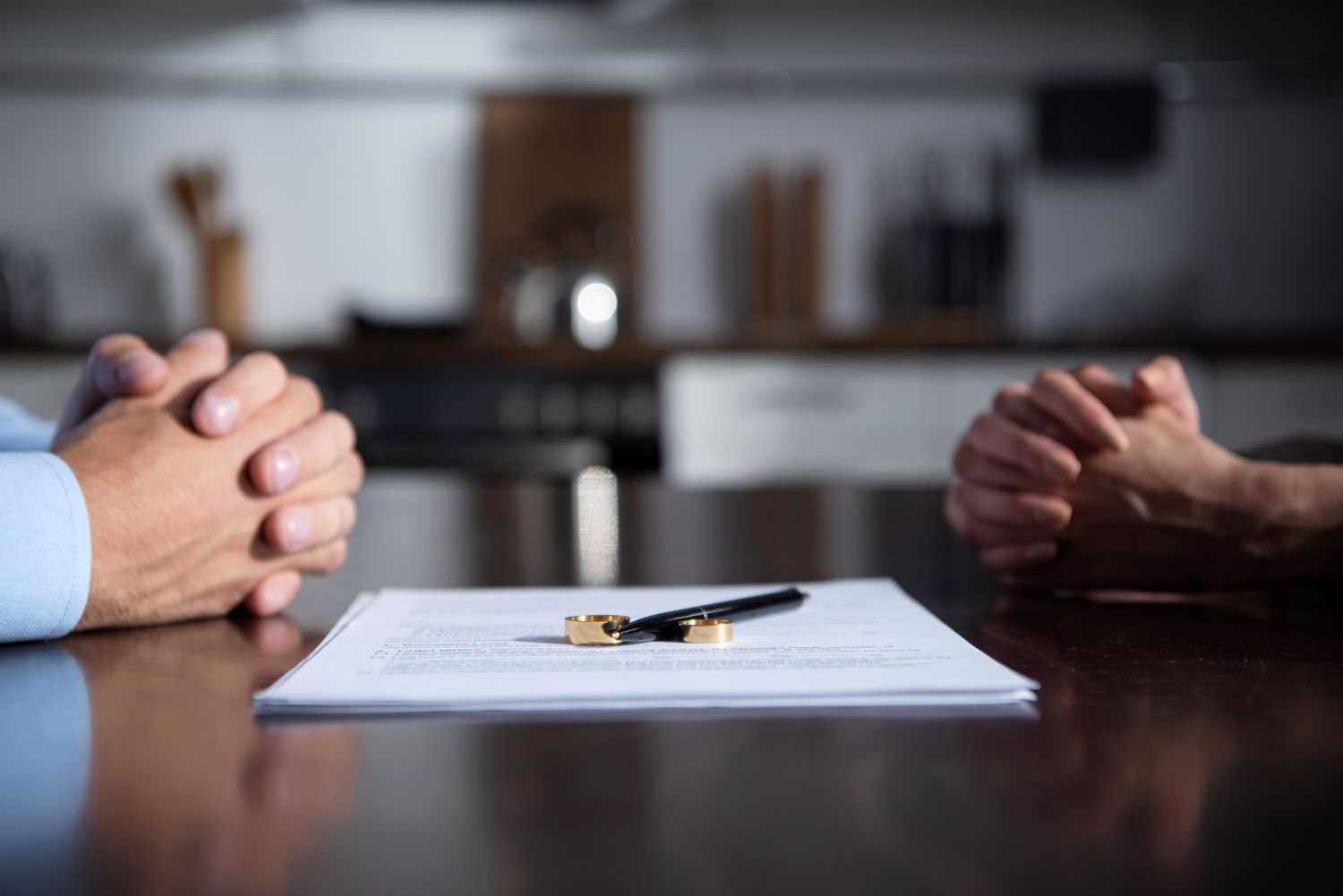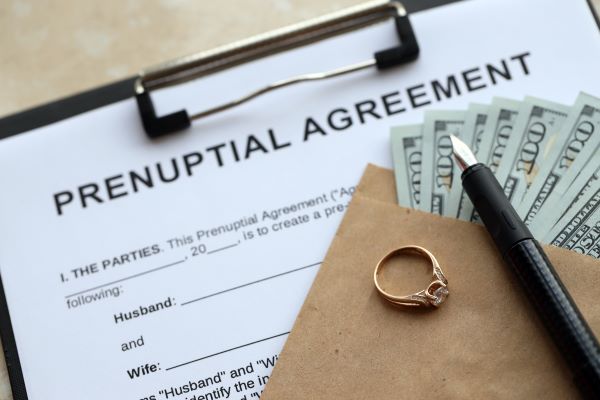Despite their unwarranted negative reputation, prenuptial agreements can be the key to offering couples greater reassurance and clarity before they tie the knot or enter a civil partnership.
Fortunately, the experienced team of family lawyers at Mark Reynold’s Solicitors can help to dispel common prenup myths, answer some of the most frequently-asked questions, and guide you through the entire prenuptial agreement process.
Within this comprehensive guide to prenuptial agreements, we leave no stone unturned.
Our expert legal team explains why these written contracts can be useful, how they work, and the important role a professional solicitor can play in their creation and execution.
What is a prenuptial agreement?
A prenuptial agreement (also referred to as a prenup or premarital agreement), is a type of written contract, signed before marriage or entering a civil partnership, which outlines how a couple’s assets should be divided in the event that they divorce or end their civil partnership.
A proactive measure, it encourages couples to have open communication about their finances, ensuring any concerns are addressed quickly and early, and both parties have a clear understanding of one another’s expectations.
How do prenuptial agreements work?
Prenuptial agreements work by simply outlining which partner receives which assets. Assets can be retained by one partner or split between the two parties either equally or a certain percentage.
Essentially, these agreements prevent the automatic equal division starting point for the sharing of marital assets that would typically happen as part of a divorce.
Why consider a prenuptial agreement?
Considering signing a prenup? Always speak to a legal professional first. At Mark Reynold’s Solicitors, we offer comprehensive legal advice, helping you to identify both the benefits and potential implications of signing on the dotted line.
One of the most significant benefits of entering into a prenuptial agreement is that it establishes clear financial boundaries for both parties. This means you both know exactly which assets you’ll be taking with you if you divorce or dissolve your civil partnership.
Contrary to popular belief, studies have shown that prenuptial agreements don’t make divorce more likely. When approached in the right way with support from an experienced prenuptial agreement solicitor, both parties can enjoy greater reassurance, clarity, and protection.
Some key advantages of prenuptial agreements include:
You’re prepared for the worst
No one gets married or enters into a civil partnership thinking about separation, but unfortunately, it can and does happen. However, with an existing prenuptial agreement, you’ll be better prepared for the potentially stressful and emotional process of negotiating and dividing your assets.
They’re easy to obtain
Experienced prenuptial agreement solicitors are experts at helping their clients to obtain this type of agreement. The Mark Reynold’s Solicitors team will work with you to ensure all the necessary terms have been covered well ahead of your upcoming nuptials or civil ceremony.
You have greater clarity and assurance
Alongside helping to prepare you for the worst, a prenuptial agreement can also give couples greater peace of mind, clarity, and reassurance with regards to how their assets will be divided. This is because full financial disclosure is required from both parties, encouraging an open and honest relationship from the offset.
When is signing a prenup a good idea?
Signing a prenuptial agreement may be a good idea if you want greater asset protection in the event of a divorce or dissolution. However, we always recommend discussing your specific circumstances with a prenuptial agreement solicitor to receive tailored legal advice.
While prenuptial agreements do have their benefits, potential implications can include:
Upsetting your partner
Some individuals can view prenuptial agreements as a sign of distrust in a relationship, leading to defensive behaviour from your partner. If you choose to obtain a prenuptial agreement, it’s important to approach the topic at the right time, in a sensitive and reassuring manner.
Significant legal fees
While prenuptial agreement services are often affordable, legal fees can increase with the complexity of the agreement and your chosen payment option. For example, if you opt to pay by the hour for your family lawyer instead of a fixed fee, more complex agreements that require extra work can become costly.
Not automatically legally binding
If you decide to get divorced or dissolve your civil partnership, it’s important to remember that prenuptial agreements aren’t automatically legally binding in the UK. Instead, it’s up to the judge to assess the validity and fairness of the contract to determine whether they’ll uphold the terms.
However, you can increase the likelihood of your prenuptial agreement being upheld by a judge if you seek support from an experienced family lawyer, like Mark Reynold’s Solicitors. Our expert team will use their extensive legal knowledge to ensure the validity and fairness of your prenuptial agreement.
What is included in a prenuptial agreement?
Prenuptial agreements can pertain to many different assets including property, pensions, businesses, savings, inheritance, and income. They can also cover topics such as debt liability – for example, if one party brings significant debt to their marriage that the other party doesn’t want to take on.
As a result, prenuptial agreements can be used to safeguard each partner’s existing assets, as well as protect them against debt liability should one party rack up more debt than the other.
The exact terms and clauses included in a prenuptial agreement will naturally vary from case to case depending on the preferences of both parties. Speaking to a prenuptial agreement solicitor can help to provide greater clarification over what can be included in this premarital contract.
What cannot be included in a prenuptial agreement?
It’s also equally as important to understand what can’t be included in a prenuptial agreement. Crucially, these written contracts can’t include terms relating to child support and custody (including visitation, religious upbringing, and schooling) or personal and lifestyle factors.
Any terms that could be considered illegal or unfair are also unable to be included in prenuptial agreements. As these written contracts aren’t automatically enforceable or legally binding in the UK, it’s at the judge‘s discretion as to whether they will uphold the agreement.
Agreements that are unfair or discriminatory are unlikely to be upheld by a judge. A prenuptial agreement solicitor can review the contract and ensure it meets the relevant requirements to help increase the likelihood of the contract being upheld by a UK court.
Are prenups legally binding in the UK?
In the UK, prenuptial agreements aren’t legally binding. However, these written contracts can be upheld in court by a judge, so long as the agreement is considered fair and valid. These agreements are designed to help with the division of assets if they two parties can’t come agree between themselves.
To be considered valid, the prenuptial agreement must meet certain criteria. It must be:
- Contractually valid
- Willingly entered into by both parties
- Made by deed and contain a statement signed by both parties
- Made at least 28 days before the marriage
- Made with both parties having full disclosure about the other party’s financial situation
- Made with agreement terms that don’t prejudice the reasonable requirements of children
How are future assets handled in a prenup?
Prenuptial agreements don’t just refer to how a couple’s premarital assets should be divided – they can also specify terms for assets obtained during the marriage (martial assets) or civil partnership.
As long as there’s mutual consent, the parties can use the prenup to stipulate how their future assets should be divided in the event of divorce or the end of their civil partnership. A family lawyer can work with you to ensure specific terms relating to marital assets are accurately outlined within the prenuptial agreement.
Can you change a prenup after marriage?
Prenuptial agreements are written and signed before marriage. As long as both parties consent to the amendments, these contracts can sometimes be modified to take into account changes in circumstances.
Alternatively, some prenuptial agreements can be drafted to include a Review Clause. This clause simply sets a date for when a review of the agreement should take place. This can be after a certain period of time, for example, five years, or after a life-changing event, like the birth of a child.
If you wish to change the agreement after getting married, you can do this by making a new type of written contract, known as a postnuptial agreement.
How much does a prenup cost?
The cost of hiring a prenuptial agreement solicitor in the UK can vary based on their experience, location, and the complexity of the agreement. This means prenuptial agreements can cost anywhere in the range of £500-£5000.
If you’d like to receive a more accurate quote, we recommend discussing your specific prenuptial agreement requirements with one of our professional family lawyers.
Do I need a solicitor for a prenup agreement?
Seeking the services of a family law solicitor is essential when considering a prenuptial agreement. This is because both parties must receive independent legal advice for the agreement to be valid.
A prenuptial agreement solicitor can help to draft the agreement and manage contract term and clause negotiations, ensuring that the terms are fair. These measures can help to ensure that the contract is more likely to be upheld in court should disagreements regarding asset division arise.
An experienced family lawyer can also ensure you haven’t been forced into signing the agreement and fully understand how the contract works as well as the potential implications of entering into the agreement.
If necessary, an expert prenuptial agreement solicitor, like Mark Reynold’s Solicitors, can even provide you with court representation in the event of a dispute regarding the contract. Throughout this process, they can support you with collecting relevant evidence and information.
How to get a prenuptial agreement
Obtaining a prenuptial agreement needn’t be difficult. Below, the professional legal team at Mark Reynold’s Solicitors explains how you can get a prenuptial agreement in just five simple steps.
Discuss expectations with your partner
When deciding to pursue a prenuptial agreement, it’s important that you and your partner are on the same page. Making a list of all the assets you both own, either jointly or separately, can be a great starting point for discussing your expectations.
Receive independent legal advice
First and foremost, both parties must receive independent legal advice for the premarital contract to be valid. A prenuptial agreement solicitor can also advise you on the contents of the agreement and the impact it would have on you if you decided to divorce.
Start prenuptial agreement negotiations
Even if you initially agree on how your assets should be divided, you may decide that negotiations are necessary after receiving legal advice. Each party should enlist legal guidance from a family law solicitor to help outline expectations and address concerns.
Draft the agreement
Once the terms of the prenup have been settled, your family lawyer can draft the full agreement for your review, ensuring it meets the necessary criteria. Following a full review from both parties, final amendments can then be made before the document is signed.
Sign the agreement
The final stage of the process is to simply sign the agreement. The contract must be willingly signed by both parties without any coercion. Two independent witnesses are also required to sign the agreement on behalf of each party – these witnesses cannot be related to the couple and should be over the age of 18.
How Mark Reynolds can help with prenuptial agreements
Looking to learn more about prenuptial agreements? No matter what stage of the prenuptial agreement process you’re in, receiving comprehensive legal guidance is vital. At Mark Reynolds Solicitors, we can provide expert support with:
- Drafting prenuptial agreements to avoid future disputes
- Ensuring you understand potential consequences
- Contract term and clause negotiations
- Presenting your case in court, if necessary
- Ensuring the written agreement is valid and fair
- Collecting relevant agreement evidence and information
If you’d like to find out more about our wide range of legal services related to prenuptial agreements, please contact our knowledgeable team today.
To speak to an experienced family law solicitor about your prenuptial agreement requirements, call 0800 002 9577. You can also submit your enquiry using our online contact form.









